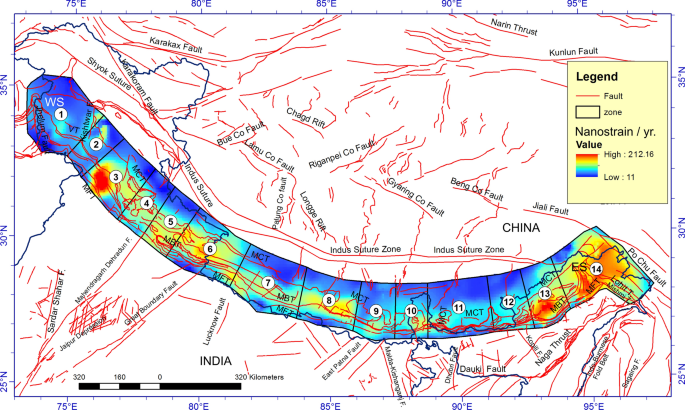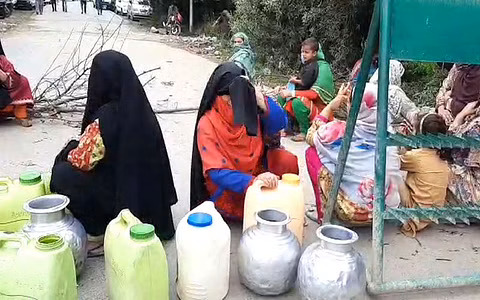A wooden boat glides through placid waters against a setting sun as fishermen row close to waterfront houses with gardens that burst with colours.
It’s an idyllic picture of a Srinagar that once was, a visual recall of a waterway punctuated by arched bridges that was not just a navigational lifeline for the city but also a protection from heavy rains and floods. The Nallah Maar (Maar is the Kashmiri word for snake), called so because it snaked through the city, is no more.
In its stead is a wide road that runs through Downtown, providing connectivity but choking other water bodies linked to it and blocking drainage avenues. It is a story of heritage lost to urbanisation, neglect and environmental apathy, said old-timers and scholars.
The road paved the canal, some said, because it had become a garbage dump. Others saw it as a political move.
Nallah Maar is believed to have existed from ancient times, but it was 14th century King Shams-ud-Din Shah Mir who demarcated it as a distinct canal, Kashmiri poet Zareef Ahmad Zareef said.
“If the Jhelum was Srinagar city’s heart, Nallah Maar was its soul,” he said. When snow melted with the advent of spring, a huge volume of water would come down from the mountains, Zareef added.
The canal protected Downtown even during a major flood in 1903 when the upper town, including Amira Kadal, got inundated, historian Muhammad Yousuf Taing said.
It was an important business centre and a mode of inland water transportation. Goods and vegetables grown in the Dal Lake would be transported through it to people’s doorsteps.
Archival images of the canal show crystal clear waters bordered by old Persian style houses with flowerbeds, he said.
“There were houses on both sides of the canal. It was flanked by ghats. Women folk would wash, bathe and clean household items on these ghats. It was because of Nallah Maar that Srinagar got the title of ‘Venice of the East’,” he said.
Nallah Maar, with its network of branches, started from Brari Nambal lagoon in the old city. It had two diversions, one emptying into Anchar lake and the other into the Jhelum. “It was more than a mode of transportation. It was a means of connecting both social and religious life in Srinagar,” said sculptor and academician Rajender Tiku.
Over time, its once clear waters turned turbid because of lack of maintenance and people dumping garbage into it.
“During Ghulam Muhammed Sadiq’s regime (in the 1960s), the canal was left to stink. In 1975, it was completely filled up during the reign of Sheikh Abdullah and turned into a road,” said Taing.
Srinagar’s identity has disappeared without the Nallah Maar and it is now a city like many others, rued Saleem Beg, chairman of the government’s National Monument Authority and convener of Jammu and Kashmir’s INTACH chapter.
“If it is still possible to navigate through canals and waterways in Venice, why can’t we do it here,” he asked.
In addition to its economic and aesthetic importance, Nallah Maar had religious significance, too. “Muslims used to go to Qamar Sahab in Ganderbal and Pandits to Kheer bawani in Tulmula by travelling in wooden boats through the canal,” said Tiku.
According to Zareef, the filling of the Nallah Maar also had a “political angle”. People who lived by the canal were seen as supporters of the then Mirwaiz, he said, and when the road came up, they were forced to relocate.
“…The canal was also partly filled to disperse the followers of the then Mirwaiz, who used to protest against the policies of Sheikh Abdullah,” Zareef added. Beg stressed that the road did not serve any purpose.
“It was counterproductive to drainage of the city. The main protagonists in the crime are the residents who lived around the canal,” he said. “You lost a waterway which provided an aesthetic look to the landscape, and water transport was an environment friendly transport which could save the city from pollution,” he added.
Tiku labelled the move an aesthetic disaster and said it left the city prone to floods every time there was heavy rain.
He said he was caught in the 2014 floods that left large parts of Srinagar under water and killed more than 200 people.
“The way things are right now, if you take the example of other canals and the lakes including the Dal and the Wular, they are going the way Nallah Maar went. I believe we will only be able to tell stories of these wonders to the generations to come and that would be unfortunate,” he said. But the experts said a revival was possible.
“We have the technology now. It has happened the world over, including in South Korea. But the impediments are many because we have now found comfort in a changed landscape,” said Beg.






